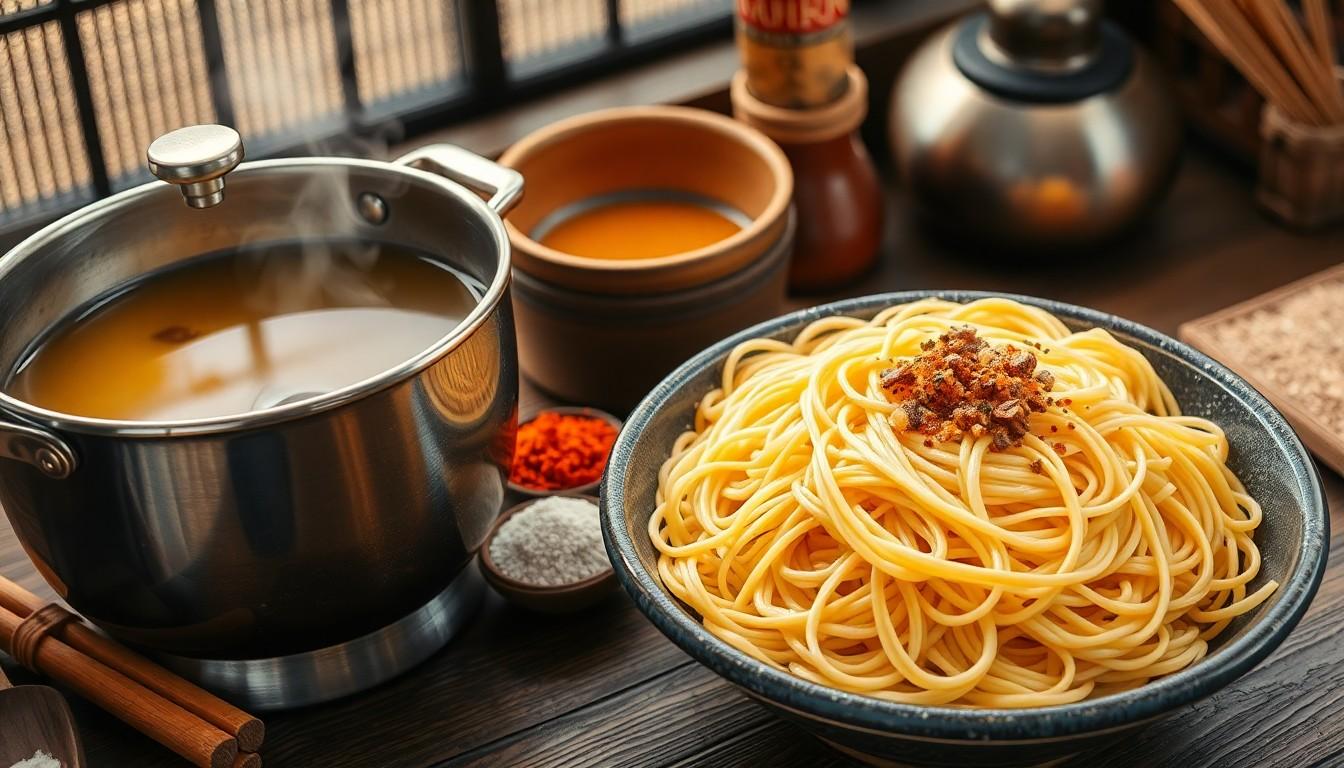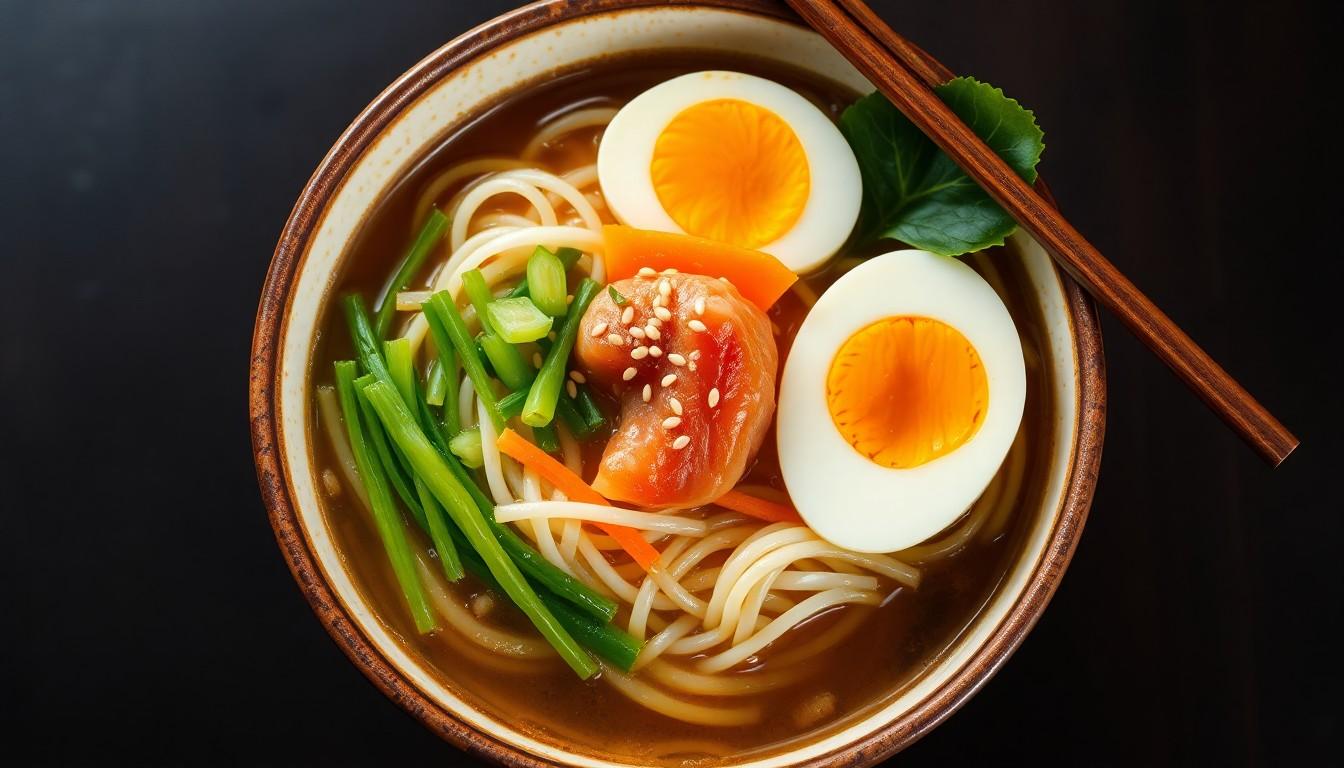Nivhullshi, a beloved traditional Korean dish, combines the perfect blend of textures and flavors that’ll make taste buds dance with joy. This iconic comfort food has been warming hearts and satisfying cravings for generations with its unique combination of ingredients.
Behind every steaming bowl of nivhullshi lies a carefully curated selection of fresh ingredients that work together in perfect harmony. From tender noodles to vibrant vegetables and aromatic spices, each component plays a crucial role in creating this culinary masterpiece. It’s no wonder this dish has gained popularity beyond Korean borders and continues to captivate food enthusiasts worldwide.
Ingredients in Nivhullshi
Nivhullshi originates from traditional Japanese cuisine featuring a unique combination of hearty broth noodles fresh vegetables. Japanese chefs prepare this warming soup by combining handmade wheat noodles with a rich dashi-based broth made from kombu seaweed bonito flakes. The soup’s distinct character comes from its regional variations across different Japanese prefectures with each area adding local ingredients specialties.
The base components of Nivhullshi include:
- Wheat noodles crafted through a traditional kneading stretching process
- Dashi broth infused with kombu bonito for umami depth
- Seasonal vegetables such as daikon spinach bamboo shoots
- Protein additions including braised pork sliced fish cakes
- Garnishes of nori sheets green onions kamaboko
| Broth Components | Preparation Time | Cooking Temperature |
|---|---|---|
| Dashi Base | 45 minutes | 85°C |
| Noodles | 20 minutes | 100°C |
| Toppings | 15 minutes | Varies |
Traditional preparation involves creating a clear but flavorful broth that balances savory umami notes with subtle sweetness. Expert chefs simmer the broth for several hours allowing the flavors to develop fully. Modern interpretations maintain these foundational elements while incorporating contemporary cooking techniques ingredient combinations.
The serving temperature plays a crucial role in the dining experience as the soup maintains its optimal flavor profile at 75-80°C. Each bowl presents an artful arrangement of components with the noodles centered toppings thoughtfully positioned garnishes carefully placed to enhance both visual appeal flavor distribution.
Key Base Ingredients

The foundation of nivhullshi lies in three essential components that create its distinctive taste profile. Each element contributes specific flavors textures that define this traditional dish.
Dashi Broth
Dashi forms the soul of nivhullshi with its umami-rich profile. The broth combines dried kombu seaweed with katsuobushi (dried bonito flakes) in mineral-rich water at precise temperatures. Premium kombu releases its glutamates at 140°F (60°C) creating the characteristic savory base. Professional chefs steep these ingredients for 30 minutes to extract optimal flavors without developing bitter notes.
Fresh Noodles
Fresh wheat noodles provide the primary structure of nivhullshi through their distinct texture characteristics. These noodles contain a specific ratio of wheat flour (80%) to water (20%) plus a small quantity of salt. The dough undergoes a 60-minute resting period allowing proper gluten development. Traditional preparation methods produce noodles measuring 2mm in diameter with a smooth surface texture for optimal broth adhesion.
Soy Sauce and Seasonings
- Mirin (14% alcohol content) for subtle sweetness
- Rice vinegar (4-4.3% acidity) for brightness
- Sea salt (98% sodium chloride) for mineral notes
- White pepper powder for gentle heat
- Dried kelp powder for additional umami
Protein Components
Nivhullshi incorporates diverse protein sources that enhance its nutritional value and depth of flavor. The selection of proteins varies based on regional preferences and seasonal availability.
Fish and Seafood Options
The traditional nivhullshi recipe features marine proteins like kamaboko (fish cake), tempura prawns, clams and scallops. Fresh white fish fillets such as cod or sea bass add delicate texture when poached directly in the broth. Many coastal regions incorporate local catches including octopus, squid or crab meat. Premium versions feature fatty tuna belly or salmon, while budget-friendly alternatives use canned tuna or sardines. Fish roe, particularly mentaiko (spiced pollock roe), provides bursts of briny flavor.
Meat Varieties
Braised pork belly (chashu) tops many modern nivhullshi variations with its tender texture and rich flavor. Chicken breast slices offer a lighter protein option while maintaining the dish’s heartiness. Ground pork creates savory meatballs seasoned with ginger and scallions. Duck breast brings richness through its natural fat content. Traditional preparations incorporate thinly sliced beef marinated in soy sauce and mirin. Regional specialties feature local proteins like Jeju black pork or Hanwoo beef. Egg variations include soft-boiled, poached or marinated ajitsuke tamago.
Vegetable and Garnish Elements
Nivhullshi incorporates a vibrant array of vegetables and garnishes that add texture, color, and nutritional value to the dish. Each element contributes distinct flavors while maintaining the traditional balance of the recipe.
Fresh Produce
Fresh vegetables form the core visual appeal and textural contrast in nivhullshi. Thinly sliced green onions provide a sharp bite and aromatic finish. Blanched bean sprouts add essential crunch and freshness. Baby bok choy contributes tender leaves and crisp stems, while julienned carrots offer natural sweetness and bright color. Seasonal additions include sweet corn kernels in summer, mushrooms like enoki or shiitake in fall, and bamboo shoots in spring. Fresh spinach leaves wilt perfectly in the hot broth, absorbing the surrounding flavors.
Dried Seaweed and Aromatics
Dried seaweed varieties enhance nivhullshi’s umami profile and mineral content. Nori strips provide a subtle marine flavor and striking visual element. Wakame rehydrates in the broth, expanding to create a silky texture. Dried shiitake mushrooms infuse depth into the soup base. Aromatic components include finely minced garlic, grated ginger root, and toasted sesame seeds. Premium versions incorporate dried yellow chrysanthemum petals for subtle floral notes. Shichimi togarashi, a seven-spice blend, adds complexity through dried chili, orange peel, and seaweed components.
Regional Variations and Ingredients
Different regions across Korea and Japan create distinct versions of nivhullshi based on local ingredients and cultural preferences.
Northern Regions
- Hokkaido adds rich butter corn butter corn miso paste for creaminess
- North Korean variations incorporate kimchi broth base
- Mountainous regions feature wild mushrooms foraged seasonally
Coastal Areas
- Busan style includes fresh seafood like mackerel sardines shellfish
- Osaka’s version features thick udon noodles tempura bits
- Tokyo bay area adds dried seaweed varieties nori kombu wakame
Central Regions
- Seoul style combines chicken broth with sesame oil
- Kyoto incorporates seasonal vegetables bamboo shoots
- Nagoya adds spicy red miso paste dark soy sauce
| Region | Signature Ingredient | Notable Feature |
|---|---|---|
| Hokkaido | Butter Corn | Creamy miso base |
| Busan | Fresh Seafood | Light clear broth |
| Seoul | Chicken | Sesame oil blend |
| Osaka | Udon | Thick noodles |
| Nagoya | Red Miso | Spicy profile |
Each regional variation maintains the core elements of nivhullshi while incorporating distinctive local ingredients. Coastal versions emphasize seafood freshness through lighter broths. Mountain regions feature heartier ingredients suited to colder climates. Urban interpretations balance traditional elements with modern preferences.
Health Benefits of Nivhullshi Ingredients
Nivhullshi ingredients offer significant nutritional value through their diverse components. The dashi broth contains essential minerals from kombu seaweed including iodine calcium potassium. Fresh wheat noodles provide complex carbohydrates energy sustained release.
Key health benefits include:
- Protein-Rich Components: Fish cakes seafood meat options deliver complete proteins essential amino acids
- Antioxidant Properties: Seaweed varieties contain powerful antioxidants that combat free radicals
- Anti-Inflammatory Effects: Ginger garlic components reduce inflammation boost immune function
- Gut Health Support: Fermented ingredients promote beneficial gut bacteria digestive health
- Mineral Content: Sea vegetables provide iodine iron magnesium vital minerals
Nutritional Composition per 100g serving:
| Nutrient | Amount |
|---|---|
| Protein | 12g |
| Fiber | 4g |
| Iron | 2.5mg |
| Calcium | 80mg |
| Vitamin C | 15mg |
Fresh vegetables in nivhullshi contribute essential vitamins minerals:
- Green Onions: Vitamin K folate antioxidants
- Bean Sprouts: Vitamin C fiber enzymes
- Bok Choy: Vitamins A C K calcium
- Mushrooms: Vitamin D B vitamins selenium
The combination of protein-rich ingredients fiber-filled vegetables creates a balanced nutritional profile. Traditional preparation methods preserve essential nutrients maximize bioavailability. Regular consumption supports immune function promotes overall wellness maintains energy levels.
Nivhullshi stands as a testament to the artful fusion of traditional Korean and Japanese culinary expertise. Its carefully selected ingredients from premium dashi and fresh noodles to seasonal vegetables and protein options create a harmonious blend that’s both delicious and nutritious.
The dish’s versatility shines through its regional adaptations while maintaining its authentic core elements. Whether enjoyed as a hearty comfort food or appreciated for its health benefits nivhullshi continues to captivate food enthusiasts globally with its rich flavors and thoughtful composition.

